U.S. National Academies Elect New Members
June 16, 2000The National Academy of Sciences elected 60 new members at its meeting earlier this year. Considered one of the highest honors that can be bestowed on a scientist or engineer in the U.S., academy membership recognizes "distinguished and continuing achievements in original research." A private organization that now has 1843 active members, the academy acts as an official adviser to the federal government in issues involving science and technology. Representing SIAM among the new members are:
Marsha Berger, Courant Institute of Mathematical Sciences, New York University. Interested in computational fluid dynamics, adaptive methods for PDEs, and parallel computing, Berger tells SIAM News that her early work focused on adaptive methods for simulating complex fluid flows in which the complexity resulted from nonlinearity. More recently, the emphasis has shifted to fluid flows in which the complexity is due to geometry.
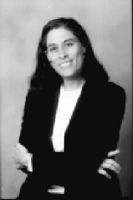
Typically, she points out, creating a grid around a complicated geometry takes months, whereas the simulation of the flow is a matter of hours. She and her collaborators (Michael Aftosmis and John Melton, both of the NASA Ames Research Center) have developed a technology that greatly simplifies and automates the grid-generation process. SIAM News readers had the opportunity to learn about this work when Barry Cipra, inspired by Berger's invited talk at the 1995 SIAM Annual Meeting, described her group's analysis "of a quirky feature of the airflow around the C-17."
She describes Courant as "a great home for interdisciplinary research---the kind of research needed in scientific computing." A professor in the Department of Computer Science, she is also the institute's current associate director.
F.A. Dahlen, a professor in the Department of Geosciences and an associate faculty member in the Program in Computational and Applied Mathematics, Princeton University. Dahlen has worked on a variety of problems in theoretical geophysics, including the free oscillations of the earth, seismic wave propagation in heterogeneous media, and the mechanics of mountain building at collisional tectonic plate boundaries. Over the past twenty years, he has worked with a number of graduate students to elucidate the duality between propagating elastic body waves and the associated standing waves or normal modes of vibration of the earth, by application of the Einstein-Brillouin-Keller semiclassical quantization procedure. He and his collaborators have also applied Whitham's averaged JWKB variational principle to the analysis of Love and Rayleigh wave propagation on a laterally variable earth.
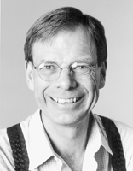
He is currently collaborating with Princeton colleagues Shu-Huei Hung and Guust Nolet on a generalization of the linearized geometrical ray theory that is the foundation for essentially all seismic traveltime tomography; in particular, they have developed a way to account for wavefront healing and other diffraction effects in the inverse problem for traveltimes measured by cross-correlation of an observed and synthetic broadband pulse. Their analysis has revealed a hitherto unappreciated and remarkably unintuitive feature---that the sensitivity to 3D wavespeed variations of such a finite-frequency traveltime is identically zero along the geometrical ray! Dahlen is a co-author, with Jeroen Tromp of Caltech, of the recently published Theoretical Global Seismology (Princeton University Press, 1998).
Arthur Jaffe, Landon T. Clay Professor of Mathematics and Theoretical Science, Harvard University. With research interests in the mathematical foundations of physics, Jaffe holds appointments in both physics and mathematics. Building on his earlier research, which led to the founding of constructive quantum field theory, Jaffe has worked more recently to construct examples of supersymmetric quantum fields. New directions include investigations in quantum theory that have ties to noncommutative geometry, and studies of the relevance of quantum symmetry to physics, with connections to the theory of geometric invariants.
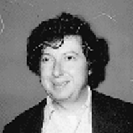
As president of the American Mathematical Society (1997-98), Jaffe was an energetic promoter of mathematics in Washington, both on Capitol Hill and at the funding agencies. Now president of the Council of Scientific Society Presidents, he is continuing those activities.
Since 1998 Jaffe has been president of the Clay Mathematics Institute, a private foundation (also endowed by Landon T. Clay). In keeping with its mission of creating new mathematical knowledge, CMI has devised programs for hiring mathematicians at all career stages. As this issue of SIAM News goes to press, Jaffe is in Paris for CMI's Millennium Event, where a highlight is to be the announcement of seven $1 million prizes for the solution of fundamental problems in mathematics (the Navier-Stokes equations and P = NP? being two examples).
Thomas Kailath, Hitachi America Professor of Engineering Signal Processing, Communications, Control and Computation, Stanford University. For many years a self-described "person who only writes papers," albeit in many areas (including information theory and communications, control and linear systems, signal processing, computation, probability and statistics, linear algebra, and operator theory), Kailath shifted the focus of his research during the past decade to applications. It was the late Louis Auslander, he tells SIAM News, who (while at DARPA) inspired the change, encouraging Kailath to look into semiconductor manufacturing, which did not seem to be making use of techniques from the "systems side" of electrical engineering. The result for him and his students, Kailath says, has been ten very enjoyable years devoted to the development of solutions for industry, with the not unexpected bonus of new theoretical results along the way.
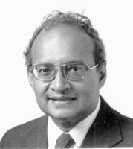
The decade in question being the 1990s, a startup company was another result. Former postdoc Buno Pati, former PhD student Yao Ting Wang, and Kailath co-founded Numerical Technologies in 1995 (and took it public this April). Numerical Technologies makes tools---centered on the automated design of what are called Phase Shifting Masks---in which the underlying mathematics is the approximate solution of a nonlinear inverse scattering problem. This work brings several ideas from communication theory into optics, Kailath explains. The main advance is that manufacturers, using current technology and sources (the "0.18 technology" generation), can now comfortably beat the ".1-micron barrier" in optical microlithography---a very cost-effective acceleration of Moore's famous "law" by several generations.
Simon Levin, George M. Moffett Professor of Biology and associate faculty member in the Program in Applied and Computational Mathematics, Princeton University. Also the founding director of the Princeton Environmental Institute, Levin points out that although his PhD is in mathematics (PDEs) and his initial appointment at Cornell University was in the mathematics department, he has been an ecologist for 30 years.
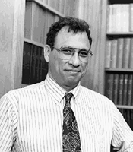
Recent projects highlighted for SIAM News include the 1999 book Fragile Dominion, written for a general audience as an outgrowth of his Ulam Lectures at the Santa Fe Institute. A member of the science board of the Santa Fe Institute for the past six or seven years, he plans to "stay actively involved" once his term is up: "Lots of thoughtful, questioning people there, from many different disciplines, are interested in how complexity arises." A second satisfying involvement in recent years has been the Beijer Institute of Environmental Economics, in Stockholm. Levin finds the institute, which brings together economists and ecologists, "extremely stimulating in terms of getting me to think about the problems I'm interested in in new ways." His research is concerned mainly with understanding the macroscopic dynamics of systems in terms of individual system components---the emergence of forest dynamics from individual tree species, for example.
George Papanicolaou, Robert Grimmett Professor in Mathematics, Stanford University. Papanicolaou's widely ranging interests have included waves and diffusion in random media, and mathematical analysis of multiscale phenomena that arise in their study. Application areas include electromagnetic wave propagation in the atmosphere, underwater sound, waves in the lithosphere, and diffusion in porous media. He has studied both linear and nonlinear waves and diffusion, in both direct and inverse problems. He is now working on the assessment of multipathing effects in communication systems, especially when time-reversal arrays are used.
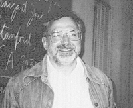
Another of his current interests is financial mathematics, in particular the use of asymptotics for stochastic equations in the analysis of complex models of financial markets and in data analysis. Those who attended the Joint Mathematics Meetings in Washington this winter had the opportunity to hear first-hand about some of his very recent results in this area---as the AMS-MAA-SIAM invited speaker, he gave a talk titled "Stochastic Differential Equations in Financial Mathematics: From Black-Scholes to the Present."
Grace Wahba, Bascom Professor of Statistics, University of Wisconsin. Wahba's interests include both statistical theory and the development of efficient numerical and statistical methods for large and extremely large data sets. The application areas for much of her current research are numerical weather prediction and climate modeling; in particular, she is developing new methods for ingesting direct and indirect noisy, heterogeneous observational data into numerical global weather prediction models, and methods for analyzing multivariate global historical climate data, building statistical models, and examining data patterns related to global change.

Also a professor of biostatistics and medical informatics, Wahba is working on the identification and flexible quantification of risk factors in large medical and demographic data sets. One further application of her work is supervised machine learning; her efforts are in model building and in the development of tuning methods for improved classification algorithms in complex multivariate situations.
A long-time SIAM member, Wahba is the author of Spline Models for Observational Data, an NSF-CBMS Conference Series volume published by SIAM in 1990 and now in its third printing---an impressive record, according to the SIAM book department.
*****
Election to the National Academy of Engineering recognizes "important contributions to engineering theory and practice, including significant contributions to the literature," as well as "unusual accomplishment in the pioneering of new and developing fields of technology." This year's election of 78 new members, including five SIAM members, brings the total NAE membership to 2027. The newly elected SIAM members are:
Tamer Basar, Fredric G. and Elizabeth H. Nearing Professor of Electrical and Computer Engineering, University of Illinois at Urbana-Champaign. Working mainly in control theory and dynamic game theory, and their applications in various domains, Basar refers SIAM News to Dynamic Noncooperative Game Theory, his 1982 book (with Geert Jan Olsder), the second edition of which was reprinetd as a SIAM Classic in 1999. The book considers both static, noncooperative, non-zero-sum games (the work for which mathematician John Nash shared the Nobel prize in economics in 1994) and dynamic zero-sum and non-zero-sum games.

Basar has worked on Nash equilibrium solutions, with particular emphasis on dynamic information patterns, primarily during the 1970s and 1980s. A more recent focus, and the subject of a 1995 book (with Pierre Bernhard), isH![]() optimal control, cast within a game-theoretic framework.
optimal control, cast within a game-theoretic framework.
In addition to applications in economics, Basar has worked, in the zero-sum framework, on the control of physical systems under uncertainty. Currently also looking at communication networks, he is interested in the problem of controlling the flow of packets in dynamic networks, with the goals being minimization of the loss of packets and of delays. Here, he explains, noncooperative game theory provides a good setting: The users, although not adversaries, are unknown to each other, and their numbers are also not known in advance; control also plays an important role in getting the most out of the available bandwidth-making the best use of the available delayed and decentralized information on the congestion state of the network to regulate the input by multiple users.
Howard Baum, Building and Fire Research Laboratory, National Institute of Standards and Technology. A NIST Fellow, Baum works on modeling both interior and outdoor fires arising in the built environment, often in industrial settings. Speaking (coincidentally) to SIAM News during the worst of the Los Alamos fire, he likens that fire to the 1991 Oakland Hills fires-each distinctive in involving both open land and buildings.
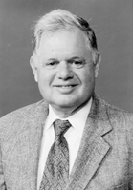
Baum was heavily involved in the construction of NIST's ALOFT, which models the dispersion of smoke from oil fires, and of a recently released, detailed mathematical model called the Fire Dynamics Simulator (available for downloading at www.fire.gov). The newer model is flexible in that it can be used both within and outside of buildings. What the models at any given time reflect, he says, is the physics as understood when the codes were put together. "As our understanding improves, and as the algorithms used to solve the equations improve, the code improves."
Most states have emergency response laws, Baum says, and the criteria used are from the NIST ALOFT code. In deciding whether to set fire to an oil spill, for example, those responsible need to determine whether they will do more or less damage (to wildlife, say) by burning off the spill.
It was combustion pioneer Howard Emmons who got Baum interested in fire. In the late 1970s, Baum says, he and a colleague wrote low-mach-number fire equations, approximating the equations of fluid mechanics so that they could be applied to fires. For SIAM News, he tracks down a quote (from a tribute to Emmons by another early combustion researcher, Hoyt Hottel): "A case can be made for fire being, next to life processes, the most complex of phenomena to understand."
Forrester T. Johnson, Senior Technical Fellow, The Boeing Company. Over the past twenty-five years, says Johnson, whose work is in computational fluid dynamics, "my team and I have developed and worked on everything from panel methods to Navier-Stokes solvers." His very early efforts include the development of spacecraft and in-atmosphere trajectory optimization techniques. More recently, combining optimization techniques with their work in CFD, he and his team have produced a practical, heavily used aerodynamic optimization method.
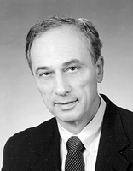
Cited in part for "bringing aerodynamic modeling of complex configurations within the means and capabilities of project engineers," Johnson points out that his resources at Boeing include a team of "remarkable scientists, engineers, and mathematicians."
Other areas in which he has worked are computational electromagnetics, computational acoustics, and aeroelastics. "I am still interested in all these topics," he says. "In general, I am interested in almost any numerical method that aids engineering analysis and design."
Franklin M. Orr, Jr., Department of Petroleum Engineering, Stanford University. Orr, who since 1994 has also been dean of Stanford's School of Earth Sciences, was cited in part for his "superb academic leadership."
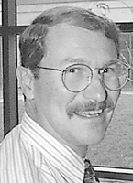
Interested in complex multicomponent flows in porous media, Orr's group seeks to apply the physical insights gleaned in their studies to the design of enhanced oil recovery processes. With the focus on gas injection processes, and on the physical characteristic of permeability, the group is working to develop accurate and efficient computational tools for field-scale predictions of the efficacy of the processes.
With the ultimate goal of developing a streamline compositional approach to the simulation of gas injection processes, the group recently produced an automatic technique for obtaining analytical one-dimensional solutions for the displacement of oil with an arbitrary number of components by a multicomponent gas. Describing its solutions as "not subject to numerical dispersion and very fast," the group is now working to extend these solutions to more complex flows.
Henry H. Rachford, Jr., Stoner Associates, Inc., Houston. In a career that has spanned production research at a major oil company, many years in academia, and the founding of (and continued involvement in) a consulting/service company, Rachford's motivation has remained consistent: "I always wanted what I did to be fun as well as useful." It was during his early days in the petroleum industry (1949-64, at Humble Oil & Refining Company) that he and Donald Peaceman developed the now well-known alternating direction implicit (ADI) methods for the solution of PDEs. They and Jim Douglas, Jr., applied ADI in developing simulation methods for oil displacement in petroleum reservoirs because such problems were really stretching the computers of the time. ADI methods were, according to Rachford, "the tip of the iceberg"---the first of many operator-splitting methods that would appear in the literature.
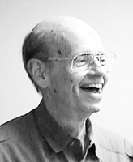
An invitation from Douglas to join the faculty at Rice University to help build a group in numerical analysis set in motion the academic stage of Rachford's career. "What we learned to do at Humble is what we started studying at Rice," he says. Rachford was a member of the Mathematics and Mathematical Sciences Departments from 1964 to 1981; an emphasis of the graduate program begun during that time was numerical methods for approximating the solution of PDEs that describe physical processes.
One of the interesting processes---the flow of fluids in pipelines---turned out to be the focus of the third phase of Rachford's career. In 1982, on retiring from Rice as professor emeritus, he went to work full time for the small company that he, Douglas, and his doctoral student, Todd Dupont, had founded, specializing in transient simulation methods for flows in pipelines. Currently the principal technical adviser at a descendant of that company, he is working on next-generation software for pipeline hydraulic analysis. "One thing consulting does," he tells SIAM News, "is to tell you what the important problems are."

